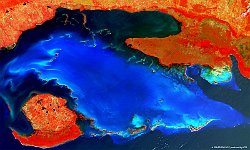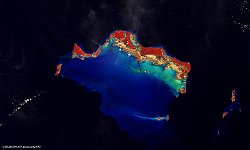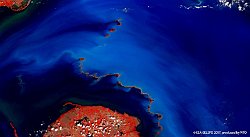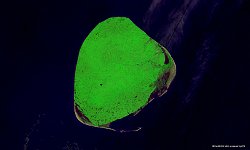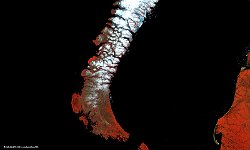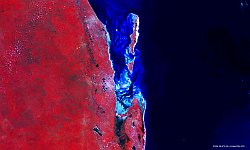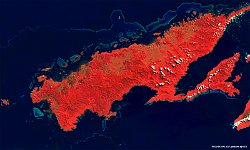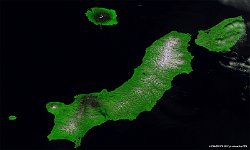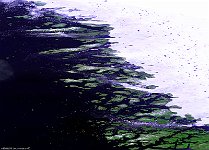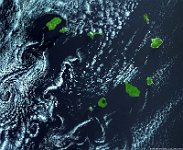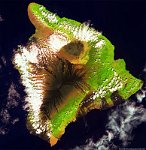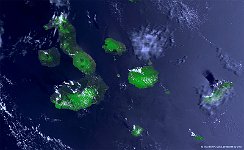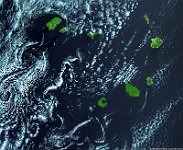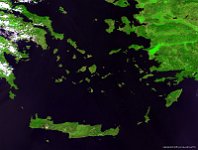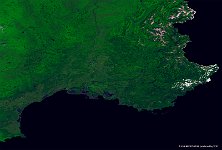7 / 19
Bazaruto Island, Mozambique
The 100 m false-colour image of 21 May 2017 shows us Bazaruto Island, a sandy island located approximately 80 kilometres southeast of the mouth of the Save River, Mozambique.
The warm, southward-flowing Mozambique Current seems to contribute to the increasing buildup of the sandy coastline. Because the water along this coastal area is very clear, much of the sub-surface channel pattern around the island is discernible. The coastal plains show numerous lakes and a swampy environment that appears to be karst topography. Underlying the area is limestone rock that has eroded into a pockmarked landscape, creating water-filled sinkholes.
Date: 21/05/2017
Resolution: 100m
